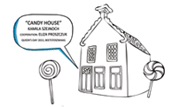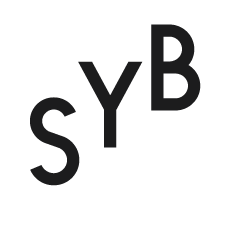29 March till 7 May 2013
CANDY HOUSE / SNOEPHUISJE
Residency Kamila Szejnoch

What was taking place at Hoofdstraat 70 (70 High Street) before Kunsthuis SYB came into existence and before Sybren Hellinga and his idealistic gallery moved into the little house in Beetsterzwaag? When Kamila Szejnoch encountered Kunsthuis SYB, this must have been the first questions she asked herself; to the Polish artist, it is second nature to dig into the past of specific places, searching for elements that have shaped our identity. Szejnoch translates her findings in powerful, iconic installations and interventions in the public space. Here, she connects the expectations, illusions and ideals of our own time with those of our ancestors.
In Kunsthuis SYB, she found a past that will fire everyone’s imagination: in the house on Hoofdstraat number 70, there once was the Candy House of Beetsterzwaag and its surroundings. And just like nobody forgets the candy shop they knew when they were little, this little shop will have left an impression in the collective memory of the small village. Kamila Szejnoch takes it upon herself to collect all the individual recollections and to structure them into an exhibition that will bring us closer to the identity of Beetsterzwaag as a sugar-loving village. She will gather memories in conversations with the inhabitants or the former owners of the candy shop as well as during activities in the Kunsthuis, such as a workshop making candy houses. The cherry on the cake of her residency is a large float that fits the theme of Candy House / Snoephuisje perfectly; it will be part of the parade to celebrate Queen’s Day in Beetsterszwaag on 30 April, a joyous occasion for anyone with a sweet tooth.
Kamila Szejnoch studied at the Academy of Fine Arts in Warsaw and from 2006 to 2008 she participated in the programme of the Dutch Art Institute in Enschede. She took part in several residency programmes, most recently, in the Incheon Art Platform in South Korea. In her work, she tries to approach obsolete elements from the past by actualising or ridiculing them, or by breathing new life into a memory. Usually, her works consists of two elements: on the one hand a given, closed off, historical and traditional element and on the other a new, contemporary, open and interactive element. With her projects, she tries to give us something that we have forgotten or that we have written off as hopelessly outdated symbolism.
Eliza Proszczuk studied at the Academy of Fine Arts in Warsaw and from 2006 to 2008 she participated in the programme of the Dutch Art Institute in Enschede. She took part in several residency programmes, most recently, in the Incheon Art Platform in South Korea. In her work, she tries to approach obsolete elements from the past by actualising or ridiculing them, or by breathing new life into a memory. Usually, her works consists of two elements: on the one hand a given, closed off, historical and traditional element and on the other a new, contemporary, open and interactive element. With her projects, she tries to give us something that we have forgotten or that we have written off as hopelessly outdated symbolism.
